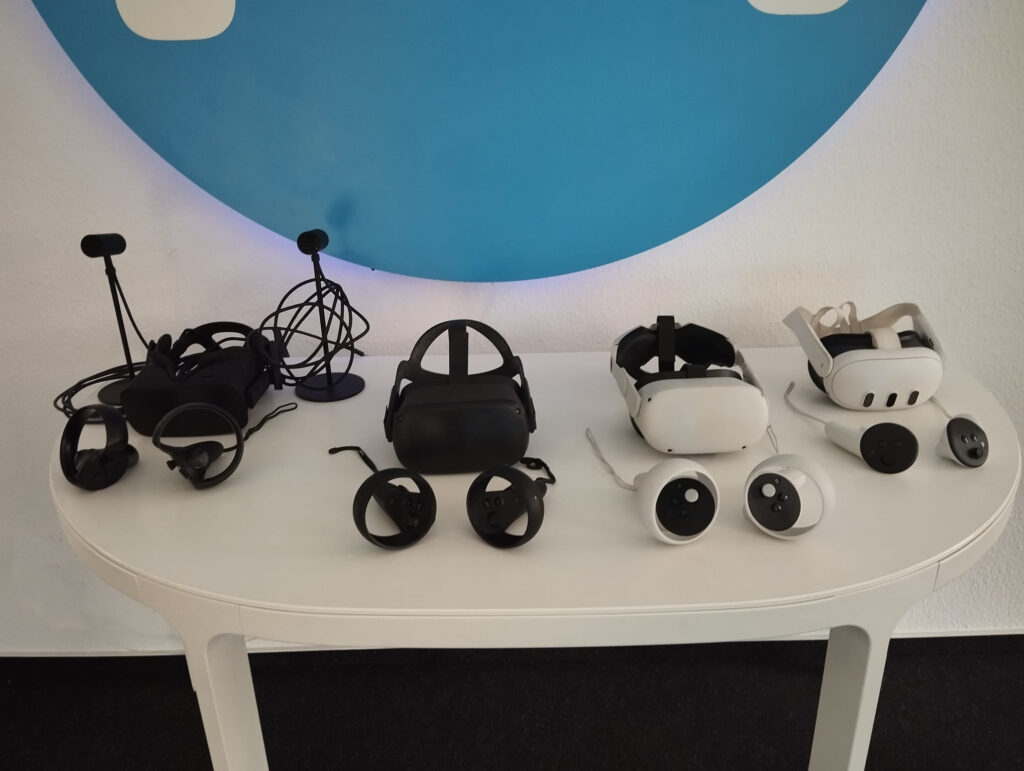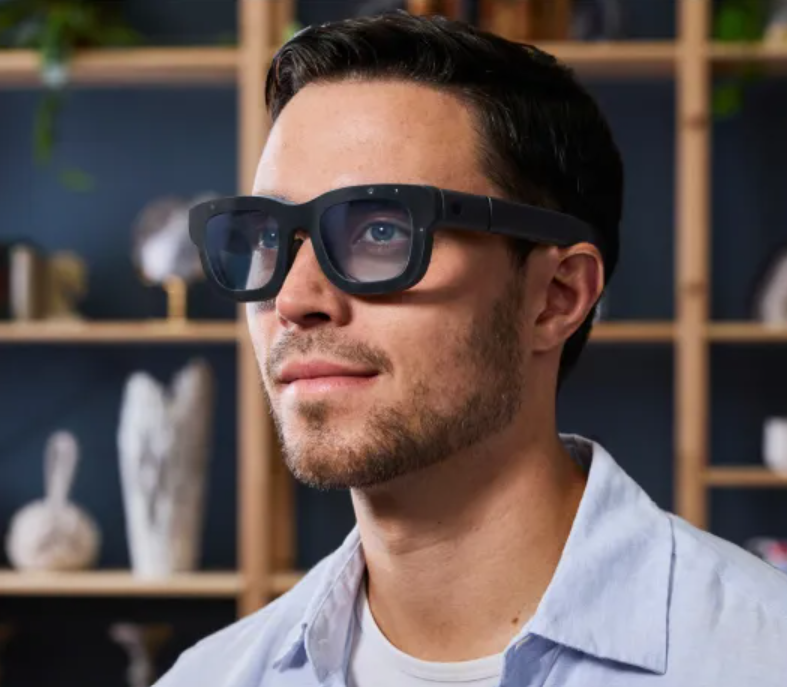Who remembers the early days of VR goggles? It wasn’t that long ago. We bought our first headset in 2017, the Oculus Rift. Compared to today, it was really unwieldy! There were cables hanging around everywhere and we needed extra sensors so that the glasses knew where they were in the room. You also needed a PC, because the glasses actually only consisted of two displays for the eyes. The PC had to be really powerful and therefore expensive, otherwise the image in the glasses would jerk like crazy.
But look how far we’ve come! Today we have compact glasses like the Meta Quest 2 or 3 (soon to be 3s) that you just put on and go. No more tangled cables and no need for an extra computer. Here is a comparison of our headsets:

Headsets in the neomatt office from left: Oculus Rift, Oculus Quest 1, Meta Quest 2, Meta Quest 3.
Yesterday, Meta presented the AR glasses codenamed Orion at Meta Connect, which look almost like normal sunglasses.

Source: Meta
Incredible, isn’t it? Imagine being able to call up visual or acoustic information or meet up with friends in a virtual environment (VR = Virtual Reality) or virtually in your real environment (AR = Augmented Reality) with a simple glance and voice instructions. You can meet distant loved ones and play board games with them. Or you can explain a new machine or tool in the office. Experts can guide other specialist staff or the AI can translate live what is being said in a foreign language.
It sounds like science fiction, but it’s actually already a reality, just not yet available for purchase in its entirety as Project Orion. Watch the video:
These new glasses are due to come onto the market from 2027. We are already super excited to see what will be possible with them!
However, the Meta Quest 3 headset, for example, can already merge virtual objects with reality thanks to mixed reality. Take a look at this article.